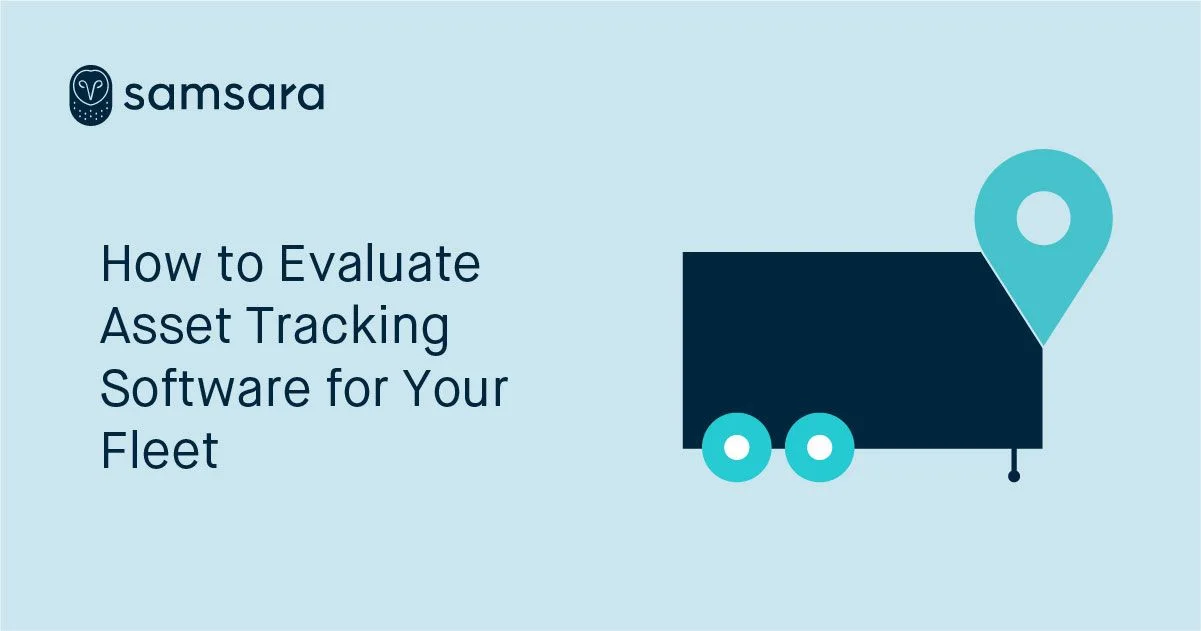What to Consider When Evaluating Asset Tracking Software for Your Fleet
September 16, 2020

Get Started with Samsara
Check Our PricesKey Takeaways
Learn how to leverage asset tracking software to keep better track of your assets, improve asset utilization, manage inventory, and more in our latest guide.
How to evaluate asset tracking software
Is your fleet looking for an asset management solution to help track its valuable assets and improve the efficiency of your company’s workflow?
Whether you manage a fleet at a small business or larger company, it’s likely you depend on some mix of heavy and light-duty equipment to meet business needs. This means losing or misplacing an asset can be a huge cost for your company, not to mention a large inconvenience for day-to-day operations.
To help alleviate the risk of asset mismanagement, fleet managers can use an asset tracking system to gather valuable insights —like location and utilization data—that drive efficiency across their complete asset mix.
What is asset tracking software?
Asset tracking software refers to a type of software that helps businesses track assets like equipment, tools, or IT assets—such as company-owned smartphones—in real time.
For the fleet industry, asset tracking software helps provide more visibility into the whereabouts of powered and unpowered equipment, including trailers, dumpsters, and shipping containers. In addition to location information, asset management systems also gives fleet managers the ability to log in to a centralized database to look up information about their assets no matter where they are. This means fleet managers have access to continuous asset data, regardless of if they’re working from the company office or a remote job site.
What can a fleet accomplish with an asset tracking solution?
An asset tracking solution can help a business in a number of different ways, but there are three major benefits the software can provide fleets on a daily basis:
Real-time location tracking
Asset tracking software gives fleets real-time visibility into the location of an asset via GPS asset tracking. Plus, with the ability to create customizable geofences—or virtual borders around an area—fleets can rest easy knowing that their assets are exactly where they’re supposed to be or get notified with geofence alerts if they’re not. This can be particularly helpful if a fleet manager wants to be able to detect stolen equipment or unauthorized use even when he is not on site.
Inventory management
Automate your fleet’s inventory tracking with asset tracking software by easily searching for equipment by location, name, type, or a custom field. This granularity helps give fleets visibility into their entire asset inventory from a single dashboard view and allows fleet managers to check in on assets from remote locations. Fleets can also use this location data to gain more inventory control onsite. Fleet managers can eliminate yard hunts by providing yard spotters with the exact location of an asset or capitalize on unexpected but lucrative loads by immediately seeing if an asset is in range and available for a requested job.
Improved utilization
Assets are expensive to own and manage, especially when factoring in maintenance and storage costs. That’s why it’s important for fleet managers to understand how each asset is measuring up against its potential. To help fleets drill down on this information, certain asset tracking solutions offer insights into exactly how an asset is being used. For example, Samsara's Utilization Reports show usage by segmenting assets by type, location, and date used. This can help fleets streamline asset ratio and even grow revenue by redeploying underutilized assets to areas with higher demand.
How do I choose the right asset management software?
The best way to decide on the best asset tracking software for your fleet is to determine what level of visibility your business needs and choose a solution accordingly. But if you’re still unsure, here’s a checklist of important questions to consider when evaluating a system:
Quality of location data: Would your asset inventory benefit from real-time equipment tracking or is a single location ping every five to ten minutes sufficient? Additionally, would it be helpful to have the option to switch between real-time or interval alerts?
Ease of use: How straightforward is the asset tracking dashboard, and will it require a heavy-lift to onboard and train employees to use it?
Customer support: What level of customer service will your team require? Is it important for your team to have access to a team via a mobile device, mobile app, or digital help desk?
Ease of install: How seamless will the install process be for your fleet? Will it require hiring additional people or new resources?
Battery life cycle: How are the asset trackers powered? Is the battery lifespan in line with your business needs?
Track equipment with Samsara
Samsara offers customers real-time asset information, unlike many asset tracking solutions that provide breadcrumb-style trails with location updates that refresh every several minutes. And with live-to-the-second tracking, fleet managers have the flexibility to either have real-time location information or be alerted via ping at specific intervals.
Samsara’s Asset Gateways use Bluetooth to connect with Samsara’s sensor system, creating a complete asset tracking solution in a single platform. Whether you’re looking for ways to collect asset data or need a tracking platform to keep an eye on equipment, Samsara’s Asset Gateways can provide valuable information for both your powered and unpowered assets. And with their compact size, Samsara Asset Trackers can attach to almost any piece of equipment and is built to go everywhere your equipment goes. Each device is outfitted with:
A durable, waterproof shell built to outlast the harshest conditions.
Anti-theft screws and a custom screw bit.
Long-lasting replaceable batteries.